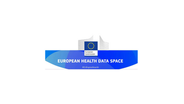- Lloyd Price
Digital Phenotyping: emerging HealthTech sub sector is 'one to watch in 2024 and 2025'

Exec Summary:
Digital phenotyping is a rapidly growing field that uses data collected from personal digital devices to measure and understand human behaviour and health. This data can come from a variety of sources, including:
Smartphones (app usage, location data, call and messaging patterns)
Wearables (heart rate, sleep patterns, activity levels)
Social media (posts, likes, comments)
Computers (browsing history, search queries)
By analysing this data, researchers can gain insights into a wide range of health conditions, including:
Mental health (depression, anxiety, bipolar disorder)
Neurological disorders (Parkinson's disease, Alzheimer's disease)
Substance abuse
Sleep disorders
Chronic diseases (diabetes, heart disease)
Digital phenotyping has the potential to revolutionize the way we study and treat human health. It can provide researchers with a more objective and continuous measure of behaviour than traditional self-report methods. It can also be used to develop new interventions and treatments that are tailored to individual patients.
Here are some of the potential benefits of digital phenotyping:
Improved diagnosis and treatment of mental health conditions: Digital phenotyping can be used to identify early signs of mental health problems and track the effectiveness of treatment.
Development of personalized interventions: Digital phenotyping data can be used to develop interventions that are tailored to the specific needs of each patient.
Remote monitoring of patients: Digital phenotyping can be used to monitor patients' health remotely, which can help to reduce healthcare costs and improve patient outcomes.
Identification of new risk factors for disease: Digital phenotyping data can be used to identify new risk factors for disease, which can help to develop preventive measures.
However, there are also some potential challenges associated with digital phenotyping:
Privacy concerns: Digital phenotyping data can be very personal, and there are concerns about how this data will be collected, stored, and used.
Accuracy of data: The data collected from digital devices may not always be accurate, and it is important to consider the potential for bias.
Limited generalisability: Digital phenotyping studies often involve small, select groups of participants, and the findings may not be generalisable to the population as a whole.
Despite these challenges, digital phenotyping has the potential to be a powerful tool for improving human health. As the field continues to develop, it is important to address the ethical and practical challenges associated with this technology.
Growth and M&A for Healthcare Technology companies
Healthcare Technology Thought Leadership from Nelson Advisors – Market Insights, Analysis & Predictions. Visit https://www.healthcare.digital
HealthTech Corporate Development - Buy Side, Sell Side, Growth & Strategy services for Founders, Owners and Investors. Email lloyd@nelsonadvisors.co.uk
HealthTech M&A Newsletter from Nelson Advisors - HealthTech, Health IT, Digital Health Insights and Analysis. Subscribe Today! https://lnkd.in/e5hTp_xb
HealthTech Corporate Development and M&A - Buy Side, Sell Side, Growth & Strategy services for companies in Europe, Middle East and Africa. Visit www.nelsonadvisors.co.uk

Current Applications of Digital Phenotypes
Digital phenotyping is making waves in various healthcare fields, offering exciting possibilities. Here's a breakdown of some current applications:
Mental Health:
Early Intervention and Risk Assessment: By analysing smartphone usage patterns like call frequency, app usage, and location data, researchers can identify individuals at risk for depression, anxiety, or suicidal ideation. This allows for early intervention and targeted support.
Monitoring Treatment Effectiveness: Digital phenotyping can track changes in behaviour after starting treatment for mental health conditions. This helps personalise treatment plans and assess their success.
Neurological Disorders:
Detecting Early Signs: Digital tools can capture subtle changes in phone usage patterns or sleep data that might indicate the onset of Parkinson's disease or Alzheimer's disease, prompting earlier diagnosis and intervention.
Monitoring Disease Progression: Tracking changes in activity levels, sleep patterns, and communication patterns can help monitor the progression of neurological disorders.
Chronic Disease Management:
Improving Adherence to Treatment: Digital phenotyping can track medication usage patterns through wearables or reminders on smartphones. This data can be used to identify patients who are struggling with adhering to their medications and provide them with additional support.
Remote Monitoring of Conditions: Digital tools can track health data like heart rate, blood sugar levels (through connected devices), and activity levels, allowing for remote monitoring of chronic conditions like diabetes or heart disease.
Beyond Diagnosis:
Understanding Disease Mechanisms: Digital phenotyping data can help researchers understand the underlying mechanisms of various diseases. For instance, studying sleep patterns might offer clues into how sleep disturbances contribute to depression.
Developing Digital Therapeutics: Digital phenotyping data can inform the development of smartphone apps or wearable-based interventions aimed at improving health outcomes.
Overall, digital phenotyping holds immense potential to transform healthcare by providing objective, continuous data on human behaviour and health, leading to earlier diagnoses, better treatment management, and ultimately, improved health outcomes.

Future of Digital Phenotyping
The future of digital phenotyping looks bright, with the potential to revolutionise healthcare in several ways:
Advanced Analytics and Integration:
Machine Learning and AI: As machine learning and artificial intelligence (AI) become more sophisticated, they will be able to analyse digital phenotyping data from multiple sources (smartphones, wearables, etc.) to create a more comprehensive picture of an individual's health. This can lead to more accurate diagnoses, personalised treatment plans, and even predictions of future health risks.
Integration with Electronic Health Records (EHR): Digital phenotyping data will likely be seamlessly integrated with Electronic Health Records (EHR), providing a more holistic view of a patient's health for healthcare providers. This can improve care coordination and decision-making.
Beyond Diagnosis and Treatment:
Preventative Healthcare: Digital phenotyping can play a significant role in preventive healthcare. By identifying early signs of health risks, interventions can be implemented to prevent the onset of diseases altogether.
Wellness Management: Digital phenotyping data can be used to develop personalised wellness programs that promote healthy habits and behaviours.
Emerging Technologies:
Passive Data Collection: New technologies like smart homes and environmental sensors will passively collect data on an individual's surroundings, offering deeper insights into lifestyle factors that might impact health.
Digital Phenotyping beyond Smartphones: Digital phenotyping might extend beyond smartphones, incorporating data from virtual reality experiences, voice assistants, and other interactive technologies to understand human behaviour more comprehensively.
Challenges to Address:
Privacy Concerns: Stricter data privacy regulations and robust data security measures will be crucial to ensure user trust and ethical data collection practices.
Standardization and Interoperability: Standardizing data collection methods and ensuring interoperability between different digital phenotyping platforms will be essential for wider adoption and data sharing.
Algorithmic Bias: Mitigating bias in algorithms used to analyze digital phenotyping data is crucial to ensure fair and equitable application across diverse populations.
Overall, the future of digital phenotyping is brimming with possibilities. By addressing the challenges and harnessing the power of advanced technologies, digital phenotyping has the potential to transform healthcare delivery, empowering individuals to take a more active role in managing their health and well-being.
Growth and M&A for Healthcare Technology companies
Healthcare Technology Thought Leadership from Nelson Advisors – Market Insights, Analysis & Predictions. Visit https://www.healthcare.digital
HealthTech Corporate Development - Buy Side, Sell Side, Growth & Strategy services for Founders, Owners and Investors. Email lloyd@nelsonadvisors.co.uk
HealthTech M&A Newsletter from Nelson Advisors - HealthTech, Health IT, Digital Health Insights and Analysis. Subscribe Today! https://lnkd.in/e5hTp_xb
HealthTech Corporate Development and M&A - Buy Side, Sell Side, Growth & Strategy services for companies in Europe, Middle East and Africa. Visit www.nelsonadvisors.co.uk







